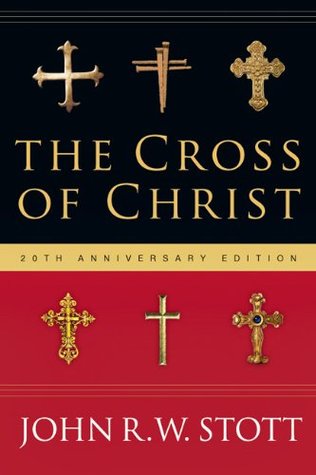More on this book
Community
Kindle Notes & Highlights
the cross which, as we have particularly considered in this chapter, is an exposure of human evil, is at the same time a revelation of the divine purpose to overcome the human evil thus exposed.
secondly its deliberate character (for, though due to human wickedness, it was also due to the set purpose of God, voluntarily accepted by Christ who gave himself up to death).
might bring us to God
The beneficial purpose of his death focuses down on our reconciliation.
Christ died for our sins. Our sins were the obstacle preventing us from receiving the gift he wanted to give us.
‘Christ died for our sins according to the Scriptures’ (Paul); ‘Christ died for sins once for all’ (Peter); ‘he has appeared once for all...to do away with sin by the sacrifice of himself’, and he ‘offered for all time one sacrifice for sins’ (Hebrews); ‘the blood of Jesus, (God’s) Son, purifies us from all sin’ (John); ‘to him who loves us and has freed us from our sins by his blood...be glory’ (Revelation).
Fourthly, Christ died our death,
the link is not merely that of consequence (he was the victim of our human brutality) but of penalty (he endured in his innocent person the penalty our sins had deserved).
death is related to sin as its just reward: ‘the wage...
This highlight has been truncated due to consecutive passage length restrictions.
human death not as a natural but as a...
This highlight has been truncated due to consecutive passage length restrictions.
But God seems to have intended for his human image-bearers a more noble end, akin perhaps to the ‘translation’ which Enoch and Elijah experienced, and to the ‘transformation’ which will take place in those who are alive when Jesus comes.
But he came back into our world in order to go voluntarily to the cross.
Luke represented it as his own self-determined act. ‘Father,’ he said, ‘into your hands I commit my spirit.’
fourfold construction, that Christ died for us, for our good; that the ‘good’ he died to procure for us was our salvation; that in order to procure it he had to deal with our sins; and that in dying for them it was our death that he died.
1. Christ die for us
2. For our salvation, reconciliation with God (stated positively)
3. For our sin (stated negatively)
4. For the death that we deserved
we feel obliged to ask questions about the institution of the Lord’s Supper in the upper room, the ‘agony’ in the Garden of Gethsemane, and the ‘cry of dereliction’ on the cross.
If death threatens to cut a person’s life short, a sense of frustration plunges him or her into gloom. But not Jesus, for this simple reason: he did not regard the death he was about to die as bringing his mission to an untimely end, but as actually necessary to accomplish it.
The mission of a lifetime of thirty to thirty-five years was to be accomplished in its last twenty-four hours, indeed, its last six.
authentic love always expresses itself in humble service
concerned the centrality of his death. Solemnly and deliberately, during his last evening with them, he was giving instructions for his own memorial service.
He specifically told them to repeat it: ‘do this in remembrance of me’.
The Lord’s Supper, which was instituted by Jesus, and which is the only regular commemorative act authorized by him, dramatizes neither his birth nor his life, neither his words nor his works, but only his death.
It was by his death that he wished above all else to be remembered.
Secondly, Jesus was teaching about the purpose of his death.
1 Cor. 15:3; 1 Pet. 3:18; Heb. 9:26; 10:12; 1 John 1:7; Rev. 1:5–6.


